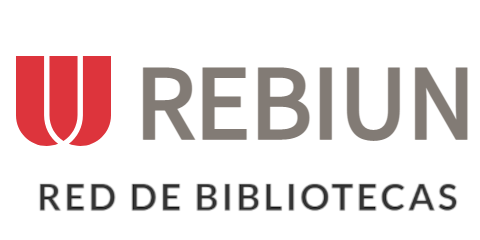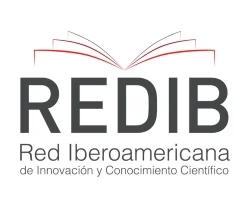Manejo multidisciplinario de hernia abdominal compleja
Resumen
La hernia abdominal compleja definida por criterios específicos como pérdida de dominio superior al 20%, defecto mayor a 10 cm, presencia de tejidos contaminados o infectados, o múltiples reparaciones previas fallidas. Su prevalencia alcanza el 1.7% en la población general, aumentando al 4% en personas mayores de 45 años, lo que subraya su importancia clínica. El objetivo de esta investigación fue analizar la evidencia científica disponible sobre el manejo multidisciplinario de la hernia abdominal compleja, incluyendo las estrategias de prehabilitación y cuidados perioperatorios. La metodología se basó en una revisión bibliográfica sistemática utilizando bases de datos biomédicas como PubMed, Scopus, Google Scholar, Elsevier y SciELO, con términos de búsqueda específicos relacionados con el manejo multidisciplinario de hernias abdominales complejas. Los resultados evidenciaron que la prehabilitación con suplementación nutricional alcanza una adherencia del 97%, reduciendo significativamente la estancia hospitalaria. La combinación de toxina botulínica con insuflación progresiva preoperatoria demostró tasas de éxito del 96.7% en el cierre fascial, con una recurrencia de solo 6.2% en seguimientos a mediano plazo. Se concluye que el abordaje multidisciplinario, que integra prehabilitación nutricional, fisioterapia respiratoria y técnicas específicas como la toxina botulínica y la PPP, optimiza significativamente los resultados quirúrgicos y reduce las complicaciones postoperatorias.
Descargas
Citas
Assouline, B., Cools, E., Schorer, R., Kayser, B., Elia, N., & Licker, M. (2021). Preoperative Exercise Training to Prevent Postoperative Pulmonary Complications in Adults Undergoing Major Surgery. A Systematic Review and Meta-analysis with Trial Sequential Analysis. Annals of the American Thoracic Society, 18(4), 678–688. https://doi.org/10.1513/ANNALSATS.202002-183OC
Bayraktar, N. (2023). Comparative Analysis of the Association Between Laparoscopic Peritoneal Dialysis Catheter Placement Methods and Anterior Abdominal Wall Complications. Cyprus Journal of Medical Sciences, 8(5), 334–338. https://doi.org/10.4274/CJMS.2023.2023-28
Berkvens, E., Wegdam, J., Visser, R., Bouvy, N., Nienhuijs, S., & Reilingh, T. S. (2021). Preoperative exercise therapy preventing postoperative complications following complex abdominal wall reconstruction: A feasibility study. International Journal of Abdominal Wall and Hernia Surgery, 4(3), 103–108. https://doi.org/10.4103/IJAWHS.IJAWHS_33_21
Chevrel, J. P., & Rath, A. M. (2000). Classification of incisional hernias of the abdominal wall. Hernia, 4(1), 7–11. https://doi.org/10.1007/BF01230581/METRICS
Chica Alvarracin, P. A., Carrera Chinizaca, V. M., Sagñay Cujilema, J. C., & Sinchiguano Chiluisa, J. Y. (2022). Hernia de pared abdominal, diagnostico y tratamiento. RECIMUNDO, 6(3), 128–135. https://doi.org/10.26820/RECIMUNDO/6.(3).JUNIO.2022.128-135
Cubero, J. Á. O., Soto-Bigot, M., Chaves-Sandí, M., Méndez-Villalobos, A., & Martínez-Hoed, J. (2021). Surgical treatment for inguinoscrotal hernia with loss of dominion with preoperative progressive pneumoperitoneum and botulinum toxin: Case report and systematic review of the literature. International Journal of Abdominal Wall and Hernia Surgery, 4(4), 156–165. https://doi.org/10.4103/IJAWHS.IJAWHS_35_21
Deerenberg, E. B., Henriksen, N. A., Antoniou, G. A., Antoniou, S. A., Bramer, W. M., Fischer, J. P., Fortelny, R. H., Gök, H., Harris, H. W., Hope, W., Horne, C. M., Jensen, T. K., Köckerling, F., Kretschmer, A., López-Cano, M., Malcher, F., Shao, J. M., Slieker, J. C., De Smet, G. H. J., … Muysoms, F. E. (2022). Updated guideline for closure of abdominal wall incisions from the European and American Hernia Societies. The British journal of surgery, 109(12), 1239–1250. https://doi.org/10.1093/BJS/ZNAC302
Elstner, K. E., Moollan, Y., Chen, E., Jacombs, A. S. W., Rodriguez-Acevedo, O., Ibrahim, N., Ho-Shon, K., Magnussen, J., & Read, J. W. (2021). Preoperative Progressive Pneumoperitoneum Revisited. Frontiers in Surgery, 8, 754543.
https://doi.org/10.3389/FSURG.2021.754543/BIBTEX
Ezeme, C., Mackenzie, P., & Newton, R. C. (2024). Ventral hernias: understanding the pathogenesis, prevention and repair. Surgery (United Kingdom), 42(1), 22–32. https://doi.org/10.1016/j.mpsur.2023.11.007
Fafaj, A., de Figueiredo, S. M. P., Rosen, M. J., & Petro, C. C. (2024). Preoperative optimization in hernia surgery: are we really helping or are we just stalling? Hernia, 28(3), 925. https://doi.org/10.1007/S10029-024-02962-9
Giuffrida, M., Biolchini, F., Capelli, P., Banchini, F., & Perrone, G. (2024). Botulinum Toxin and Progressive Pneumoperitoneum in Loss of Domain Ventral Hernias: A Systematic Review. Journal of Abdominal Wall Surgery, 3, 12650. https://doi.org/10.3389/JAWS.2024.12650
Guevara-Espejo, J. S., Abanto-Valencia, M. S., Nureña-Ramírez, J. E., & Villanueva-De La Cruz, J. P. (2022). Hernia incisional y pérdida de dominio con neumoperitoneo progresivo preoperatorio más separacion de componentes. Un reporte de caso. Revista del Cuerpo Médico Hospital Nacional Almanzor Aguinaga Asenjo, 15(1), 130–134.
https://doi.org/10.35434/RCMHNAAA.2022.151.873
Hebbale, R., Ramachandran, K., Varadaraju, R., & Cherukumudi, A. (2022). Congenital unilateral diaphragmatic eventration in adults – a case series with a brief literature review. Heart, Vessels and Transplantation, 6(Issue 4), 190–195. https://doi.org/10.24969/HVT.2022.345
Karhof, S., Boot, R., Simmermacher, R. K. J., Van Wessem, K. J. P., Leenen, L. P. H., & Hietbrink, F. (2019). Timing of repair and mesh use in traumatic abdominal wall defects: a systematic review and meta-analysis of current literature. World Journal of Emergency Surgery : WJES, 14(1), 59. https://doi.org/10.1186/S13017-019-0271-0
Khansa, I., & Janis, J. E. (2019). The 4 Principles of Complex Abdominal Wall Reconstruction. Plastic and Reconstructive Surgery Global Open, 7(12), e2549. https://doi.org/10.1097/GOX.0000000000002549
Larco Coloma, J., Larco Noboa, N., & Rumazo Zambrano, A. (2022). Abdominal Wall Hernias: different types of classifications and complications. International Journal of Medical and Surgical Sciences, 9(2), 1–11. https://doi.org/10.32457/IJMSS.V9I2.1867
López-Cano, M., García-Alamino, J. M., Antoniou, S. A., Bennet, D., Dietz, U. A., Ferreira, F., Fortelny, R. H., Hernandez-Granados, P., Miserez, M., Montgomery, A., Morales-Conde, S., Muysoms, F., Pereira, J. A., Schwab, R., Slater, N., Vanlander, A., Van Ramshorst, G. H., & Berrevoet, F. (2018). EHS clinical guidelines on the management of the abdominal wall in the context of the open or burst abdomen. Hernia : the journal of hernias and abdominal wall surgery, 22(6), 921–939. https://doi.org/10.1007/S10029-018-1818-9
Marturano, M. N., Ayuso, S. A., Ku, D., Raible, R., Lopez, R., Scarola, G. T., Gersin, K., Colavita, P. D., Augenstein, V. A., & Heniford, B. T. (2023). Preoperative botulinum toxin A (BTA) injection versus component separation techniques (CST) in complex abdominal wall reconstruction (AWR): A propensity-scored matched study. Surgery, 173(3), 756–764. https://doi.org/10.1016/J.SURG.2022.07.034
Mathes, T., Prediger, B., Walgenbach, M., & Siegel, R. (2021). Mesh fixation techniques in primary ventral or incisional hernia repair. The Cochrane database of systematic reviews, 5(5). https://doi.org/10.1002/14651858.CD011563.PUB2
Niebuhr, H., Wegner, F., Dag, H., Reinpold, W., Woeste, G., & Köckerling, F. (2024). Preoperative botolinum toxin A (BTA) and intraoperative fascial traction (IFT) in the management of complex abdominal wall hernias. Hernia, 28(6), 2273–2283. https://doi.org/10.1007/S10029-024-03156-Z/FIGURES/10
Oliveira, G. P. de, Maillo, C., Oliveira, G. P. de, & Maillo, C. (2023). Prehabilitation: Enhancing Recovery and Outcomes in Hernia Surgery. Hernia Updates and Approaches. https://doi.org/10.5772/INTECHOPEN.1002367
Perez, J. E., Schmidt, M. A., Narvaez, A., Welsh, L. K., Diaz, R., Castro, M., Ansari, K., Cason, R. W., Bilezikian, J. A., Hope, W., Guerron, A. D., Yoo, J., & Levinson, H. (2021). Evolving concepts in ventral hernia repair and physical therapy: prehabilitation, rehabilitation, and analogies to tendon reconstruction. Hernia, 25(4), 1–13. https://doi.org/10.1007/S10029-020-02304-5/METRICS
Piga, E., Zetner, D., Andresen, K., & Rosenberg, J. (2020). Imaging modalities for inguinal hernia diagnosis: a systematic review. Hernia : the journal of hernias and abdominal wall surgery, 24(5), 917–926. https://doi.org/10.1007/S10029-020-02189-4
Pogson-Morowitz, K., Porras Fimbres, D., Barrow, B. E., Oleck, N. C., & Patel, A. (2024). Contemporary Abdominal Wall Reconstruction: Emerging Techniques and Trends. Journal of Clinical Medicine, 13(10), 2876. https://doi.org/10.3390/JCM13102876
Rivera-Orna, M. Á., & Chávez-Ruiz, I. (2022). Propuesta de medicina perioperatoria en México: protocolo Enhance Recovery After Surgery aplicada a cesárea. Revista mexicana de anestesiología, 45(4), 275–279. https://doi.org/10.35366/106347
Skořepa, P., Ford, K. L., Alsuwaylihi, A., O’Connor, D., Prado, C. M., Gomez, D., & Lobo, D. N. (2024). The impact of prehabilitation on outcomes in frail and high-risk patients undergoing major abdominal surgery: A systematic review and meta-analysis. Clinical Nutrition, 43(3), 629–648. https://doi.org/10.1016/J.CLNU.2024.01.020/ATTACHMENT/CB4CC378-7EC4-42DD-905B-C5446BADC18E/MMC1.DOCX
Timmer, A. S., Claessen, J. J. M., & Boermeester, M. A. (2022). Risk Factor-Driven Prehabilitation Prior to Abdominal Wall Reconstruction to Improve Postoperative Outcome. A Narrative Review. Journal of Abdominal Wall Surgery, 1, 10722.
https://doi.org/10.3389/JAWS.2022.10722/BIBTEX
Vicente, R., Silva, R., Santos, R., Rodrigues, A., & Amoedo, M. (2021). Surgical role in the management of peritoneal dialysis catheters – evidence and proposals to improve current practices. Portuguese Journal of Nephrology & Hypertension, 35(2).
https://doi.org/10.32932/PJNH.2021.07.123
Vizcaíno César, M., Elvis, E., Hall, C., Luis Jiménez Díaz, O., Central, H. M., Luis, D., Soto, " La, & Habana, C. (2019). Evisceración abdominal postraumática en un niño. Revista Cubana de Medicina Militar, 48(2), 252–258. https://revmedmilitar.sld.cu/index.php/mil/article/view/260
Whitehead-Clarke, T., & Windsor, A. (2021). The Use of Botulinum Toxin in Complex Hernia Surgery: Achieving a Sense of Closure. Frontiers in Surgery, 8, 753889. https://doi.org/10.3389/FSURG.2021.753889
Wobith, M., Hill, A., Fischer, M., & Weimann, A. (2024). Nutritional Prehabilitation in Patients Undergoing Abdominal Surgery—A Narrative Review. Nutrients, 16(14), 2235. https://doi.org/10.3390/NU16142235
Derechos de autor 2025 Michelle Vanegas Moreta, Juan Cadena Baquero

Esta obra está bajo licencia internacional Creative Commons Reconocimiento 4.0.













.png)




















.png)
1.png)


